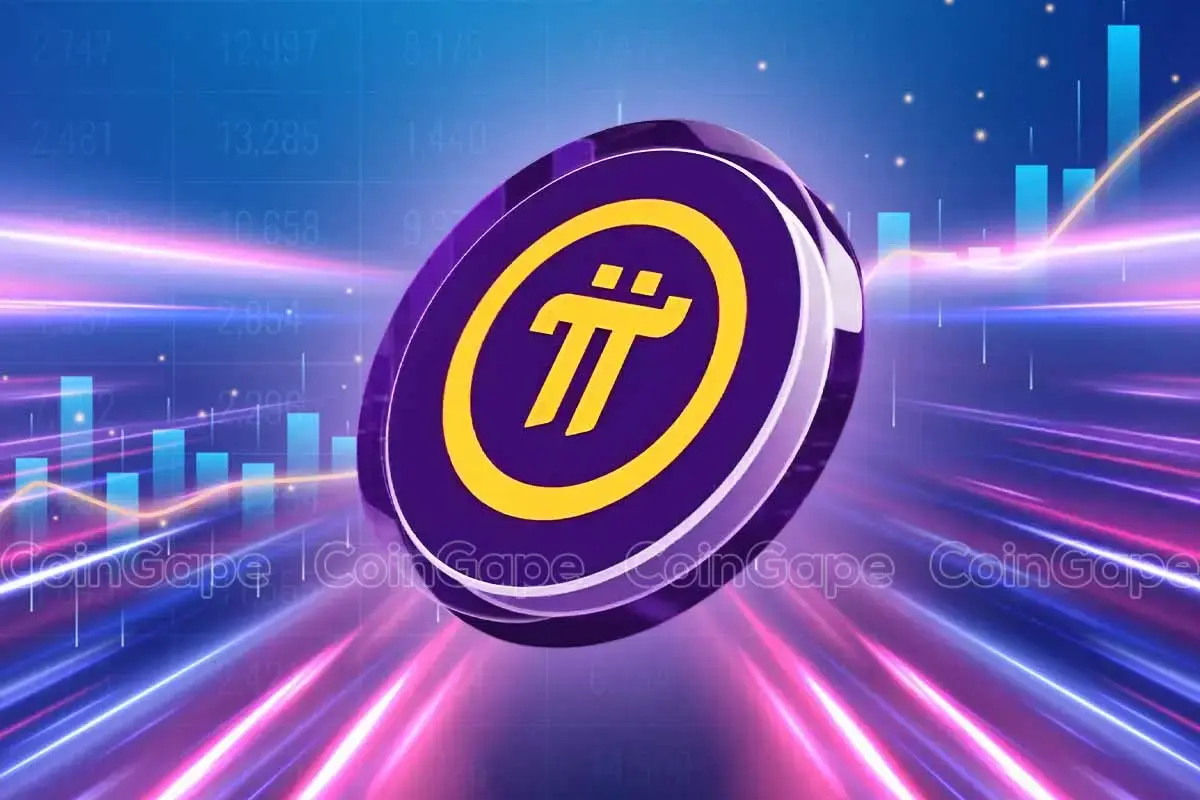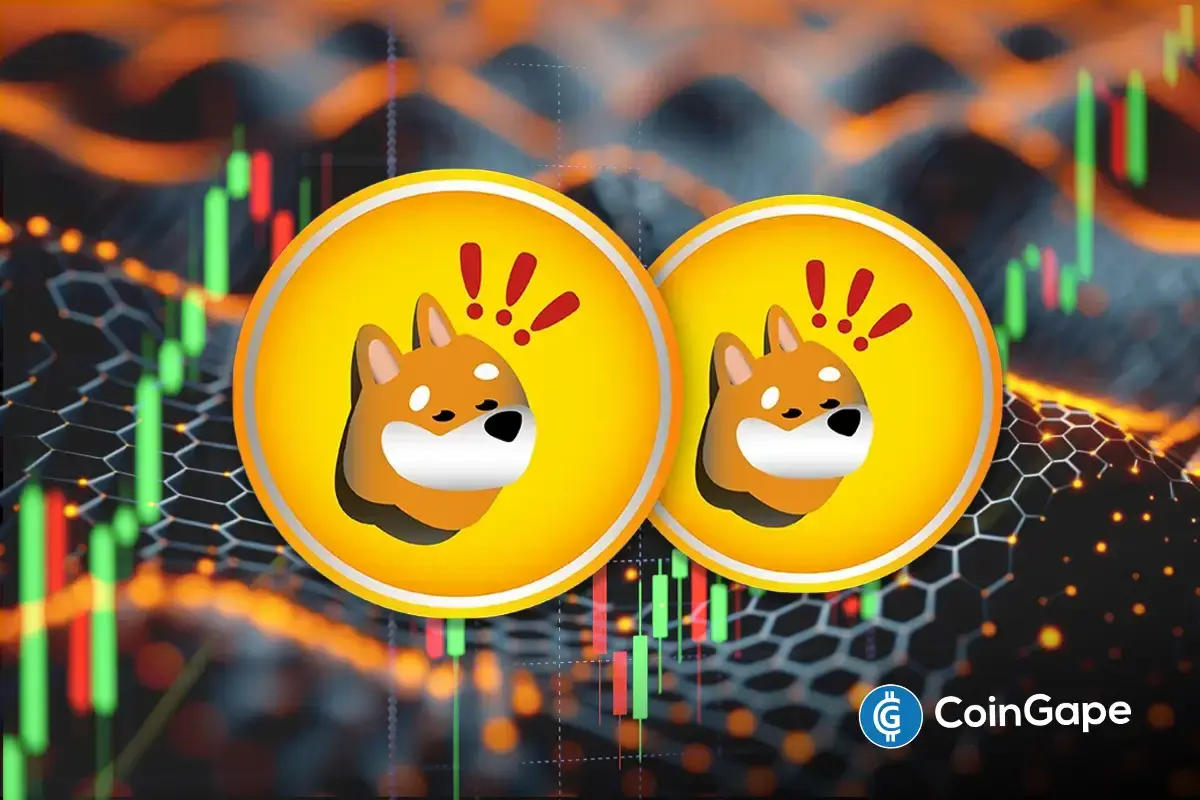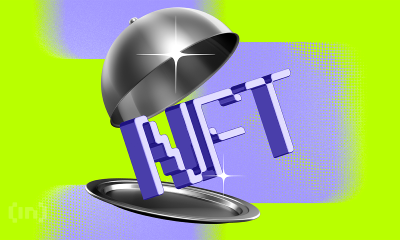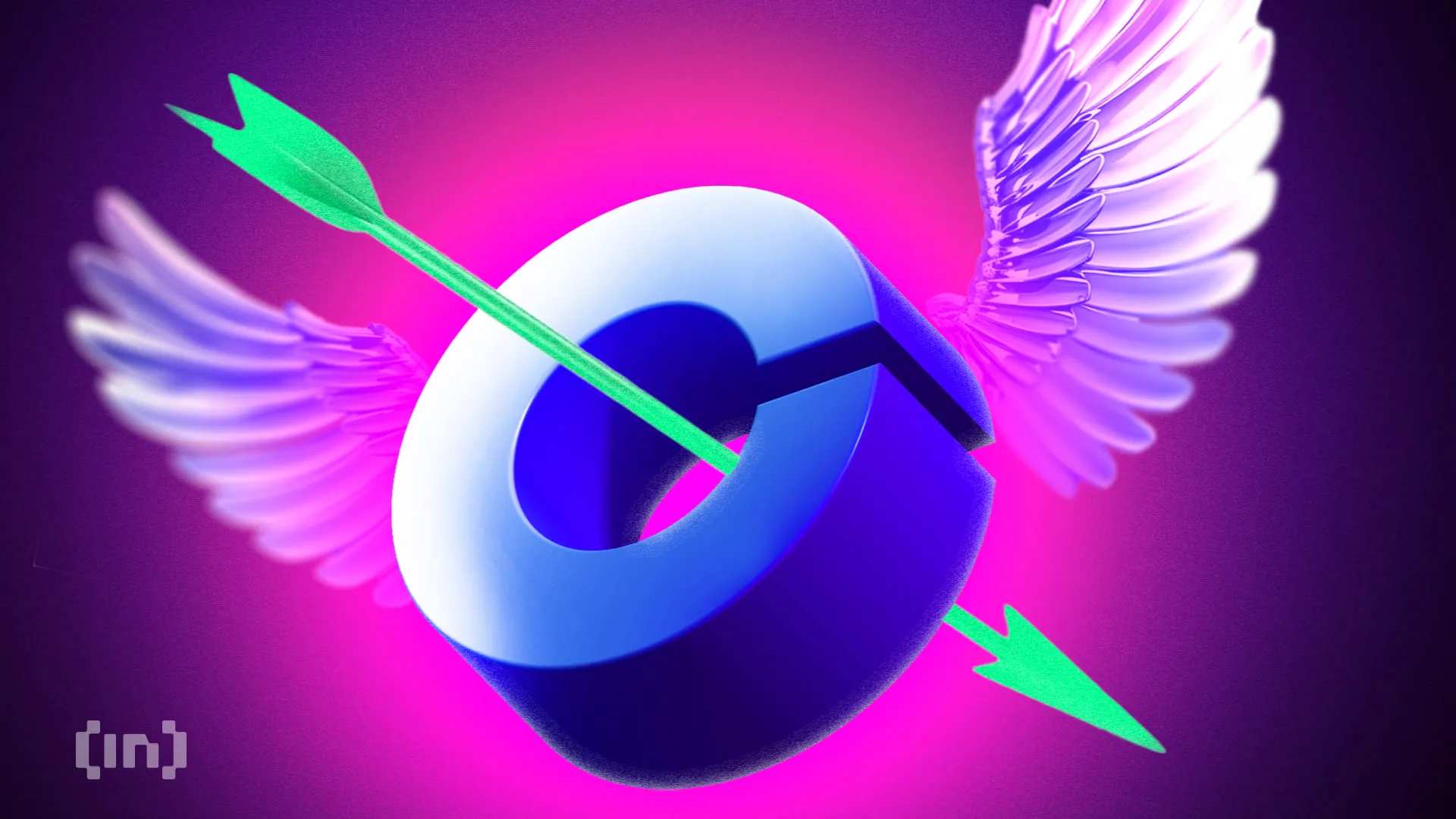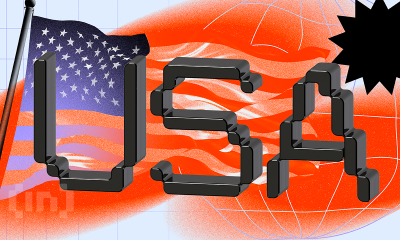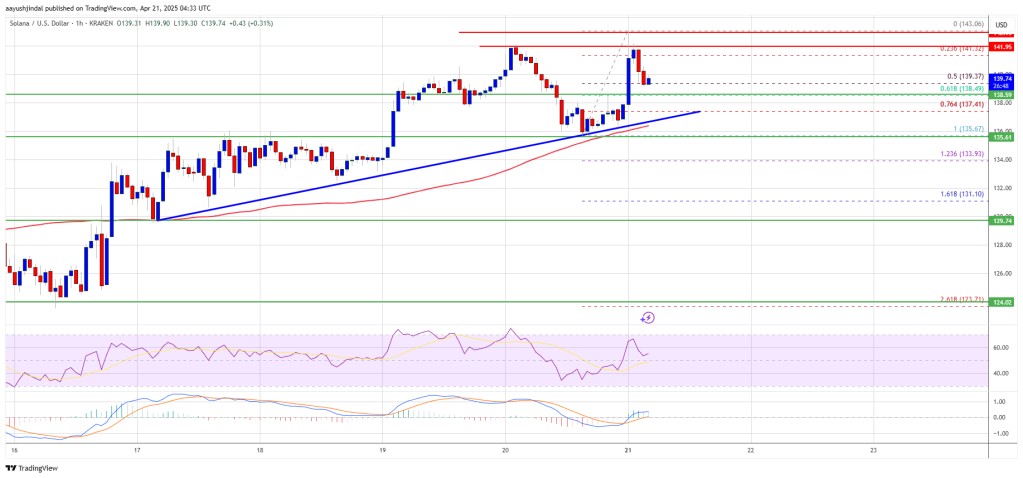Market
$50M Initiative by Premier Art & Chintai

Premier Art Holdings Ltd., a leader in fine art investments, and Chintai, a blockchain platform specializing in tokenizing real-world assets (RWAs), announced the launch of a $50 million tranche for their new initiative, The Premier Art Token (TPAT).
This partnership aims to revolutionize the fine art market using Chintai’s white-label tokenization technology. It will enable fractional ownership, making this historically exclusive asset class accessible to a broader investor base.
TPAT Value Proposition from a Market Context
TPAT allows investors to trade fractional tokens backed by a curated portfolio of fine art masterpieces. This novel approach transforms art from an illiquid asset into a dynamic and tradable investment, combining cultural value with financial opportunity.
“Tokenization provides access to assets previously out of reach for most investors while ensuring transparency and security,” said David Packham, CEO of Chintai, in a note shared with BeInCrypto.
This collaboration between Premier Art Holdings and Chintai highlights the convergence of art, technology, and finance. It demonstrates how blockchain can unlock new possibilities for both investors and art enthusiasts.
The initial $50 million tranche of TPAT will be available to accredited investors, with pre-sales starting in December 2024. Public trading will follow. Additional tranches are also in the pipeline, aiming to build a multi-billion-dollar asset portfolio.
Meanwhile, fine art has long been considered a reliable store of value, often outperforming traditional assets such as equities and bonds. By combining blockchain’s transparency and liquidity with fine art’s stability, TPAT offers a new way for investors to diversify portfolios. At the same time, they would benefit from the historical appreciation of masterpieces.
“Scarcity drives value. By tokenizing our portfolio, we democratize access to one of history’s most reliable asset classes, enabling investors to trade their shares dynamically,” noted Bob Johnston, CEO of Premier Art Holdings.
With fine art’s ability to weather economic instability, TPAT aims to appeal to those seeking stability and long-term growth.
Tokenized Assets on the Rise
Tokenizing RWAs addresses the needs of institutional clients seeking secure banking partners and custody solutions for their crypto holdings. By tokenizing assets, blockchain technology offers a safer alternative compared to less secure exchanges or wallet providers. This process also streamlines operations and opens up new opportunities.
The tokenized RWA market has experienced rapid growth, reaching $13.6 billion in value as of this writing. This represents a $3 billion increase since August, driven by institutional interest and advancements in blockchain infrastructure.
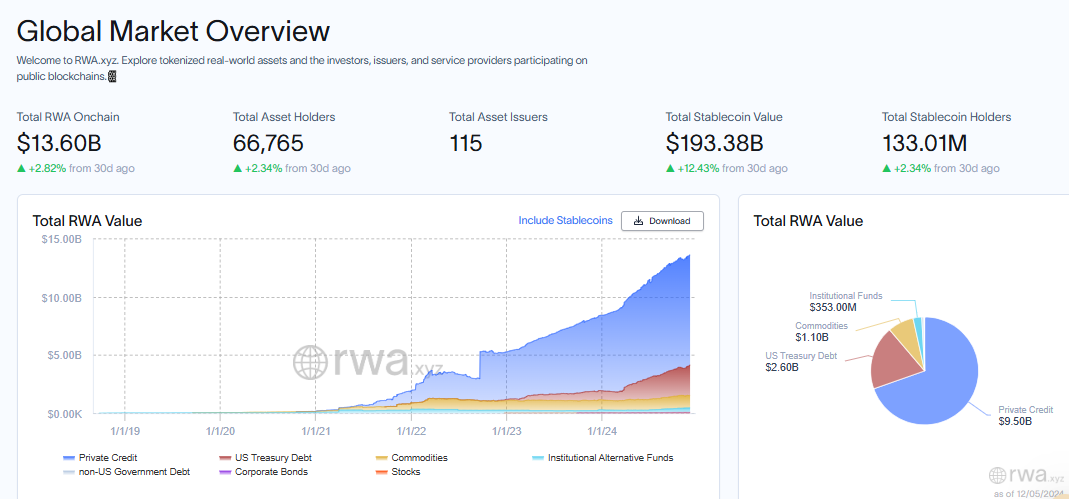
Major players such as Swift, UBS, and Chainlink have explored bridging tokenized assets with traditional payment systems. Meanwhile, platforms like WisdomTree and Grayscale have launched tokenized investment funds to cater to this growing demand.
Fine art tokenization follows a similar trajectory, with platforms like Masterworks popularizing fractional ownership of high-value art pieces. These innovations align with broader trends in fintech, where blockchain technology is reshaping illiquid markets by introducing liquidity, accessibility, and enhanced trading capabilities.
Still, the sector faces several challenges before achieving widespread adoption. Issues like establishing token legitimacy, ensuring legal acceptance in courts, and securing smart contracts are hurdles that need to be addressed for tokenized RWAs to go mainstream in traditional and decentralized finance.
“The primary challenge that can impede the adoption of these RWA tokenizations hinges on the need for clear regulations around this new technology. Once clearer operational frameworks are drafted and implemented, the limitations that might stall the mainstream adoption will be removed,” HAQQ Network Co-founder Alex Malkov recently told BeInCrypto.
Disclaimer
In adherence to the Trust Project guidelines, BeInCrypto is committed to unbiased, transparent reporting. This news article aims to provide accurate, timely information. However, readers are advised to verify facts independently and consult with a professional before making any decisions based on this content. Please note that our Terms and Conditions, Privacy Policy, and Disclaimers have been updated.
Market
Solana Rallies Past Bitcoin—Momentum Tilts In Favor of SOL

Solana started a fresh increase from the $120 support zone. SOL price is now consolidating and might climb further above the $142 resistance zone.
- SOL price started a fresh increase above the $125 and $132 levels against the US Dollar.
- The price is now trading above $130 and the 100-hourly simple moving average.
- There is a connecting bullish trend line forming with support at $137 on the hourly chart of the SOL/USD pair (data source from Kraken).
- The pair could start a fresh increase if it clears the $142 resistance zone.
Solana Price Gains Over 5%
Solana price formed a base above the $120 support and started a fresh increase, like Bitcoin and Ethereum. SOL gained pace for a move above the $125 and $132 resistance levels.
The pair even spiked toward the $145 resistance zone. A high was formed at $143.06 and the price is now retreating lower. There was a move below the 23.6% Fib retracement level of the upward move from the $135 swing low to the $143 high.
Solana is now trading above $130 and the 100-hourly simple moving average. There is also a connecting bullish trend line forming with support at $137 on the hourly chart of the SOL/USD pair. The trend line is close to the 76.4% Fib retracement level of the upward move from the $135 swing low to the $143 high.
On the upside, the price is facing resistance near the $142 level. The next major resistance is near the $145 level. The main resistance could be $150. A successful close above the $150 resistance zone could set the pace for another steady increase. The next key resistance is $155. Any more gains might send the price toward the $165 level.
Pullback in SOL?
If SOL fails to rise above the $142 resistance, it could start another decline. Initial support on the downside is near the $138.50 zone. The first major support is near the $137 level and the trend line.
A break below the $137 level might send the price toward the $132 zone. If there is a close below the $132 support, the price could decline toward the $125 support in the near term.
Technical Indicators
Hourly MACD – The MACD for SOL/USD is gaining pace in the bullish zone.
Hourly Hours RSI (Relative Strength Index) – The RSI for SOL/USD is above the 50 level.
Major Support Levels – $137 and $132.
Major Resistance Levels – $142 and $145.
Market
Bitcoin Price Breakout In Progress—Momentum Builds Above Resistance

Reason to trust

Strict editorial policy that focuses on accuracy, relevance, and impartiality
Created by industry experts and meticulously reviewed
The highest standards in reporting and publishing
Strict editorial policy that focuses on accuracy, relevance, and impartiality
Morbi pretium leo et nisl aliquam mollis. Quisque arcu lorem, ultricies quis pellentesque nec, ullamcorper eu odio.
Bitcoin price is slowly moving higher above the $86,500 zone. BTC is gaining pace and might continue higher in the near term.
- Bitcoin found support at $84,200 and started a recovery wave.
- The price is trading above $85,500 and the 100 hourly Simple moving average.
- There was a break above a connecting bearish trend line with resistance at $85,000 on the hourly chart of the BTC/USD pair (data feed from Kraken).
- The pair could start another increase if it clears the $88,000 zone.
Bitcoin Price Eyes Steady Increase
Bitcoin price remained stable above the $83,200 level and started a fresh increase. BTC was able to climb above the $84,200 and $85,000 resistance levels.
There was a break above a connecting bearish trend line with resistance at $85,000 on the hourly chart of the BTC/USD pair. The bulls were able to pump the price above the $86,500 resistance. It even spiked above $87,000. A high is formed near $87,562 and the price might continue to rise unless there is a move below the 23.6% Fib retracement level of the upward move from the $84,007 swing low to the $87,562 high.
Bitcoin price is now trading above $86,500 and the 100 hourly Simple moving average. On the upside, immediate resistance is near the $87,500 level. The first key resistance is near the $88,000 level.
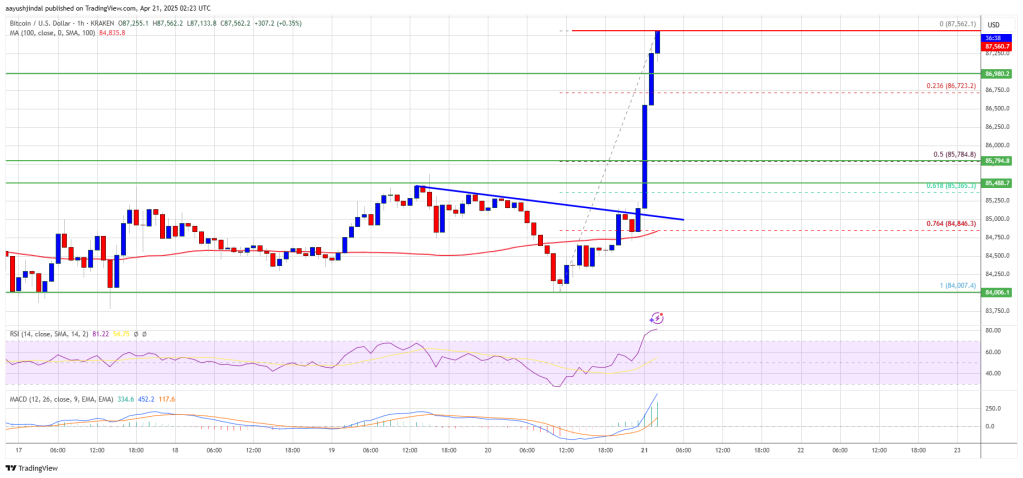
The next key resistance could be $88,800. A close above the $88,800 resistance might send the price further higher. In the stated case, the price could rise and test the $89,500 resistance level. Any more gains might send the price toward the $90,000 level.
Downside Correction In BTC?
If Bitcoin fails to rise above the $88,000 resistance zone, it could start a downside correction. Immediate support on the downside is near the $87,000 level. The first major support is near the $86,750 level.
The next support is now near the $86,000 zone. Any more losses might send the price toward the $85,750 support or the 50% Fib retracement level of the upward move from the $84,007 swing low to the $87,562 high in the near term. The main support sits at $84,850.
Technical indicators:
Hourly MACD – The MACD is now gaining pace in the bullish zone.
Hourly RSI (Relative Strength Index) – The RSI for BTC/USD is now above the 50 level.
Major Support Levels – $86,750, followed by $86,000.
Major Resistance Levels – $87,500 and $88,000.
Market
Will XRP Break Support and Drop Below $2?

XRP is down 5% over the past week, struggling to regain momentum as technical indicators flash mixed signals. Its Relative Strength Index (RSI) has dropped below 50, and the price remains stuck within a tight range between key support and resistance levels.
At the same time, the Ichimoku Cloud has shifted from green to red, with a thickening cloud ahead suggesting growing bearish pressure. With volatility compressing and momentum fading, XRP is nearing a critical point where a breakout—or breakdown—seems increasingly likely.
XRP Struggles to Regain Momentum as RSI Drops Below 50
XRP’s Relative Strength Index (RSI) is currently sitting at 44.54, after recovering from an intraday low of 40.67. Just yesterday, it was at 51.30, highlighting increased short-term volatility.
RSI is a momentum indicator that measures the speed and magnitude of recent price changes to evaluate overbought or oversold conditions.
Readings above 70 typically suggest an asset is overbought, while readings below 30 indicate it may be oversold.

With XRP’s RSI at 44.54, it’s currently in neutral territory, showing neither strong buying nor selling pressure.
However, the fact that it hasn’t crossed the overbought threshold of 70 since March 19—over a month ago—signals a lack of sustained bullish momentum. This could mean XRP is still in a consolidation phase, with the market waiting for a clearer direction.
If RSI continues to climb toward 50 and beyond, it may hint at building momentum, but without a breakout above 70, upside could remain limited.
XRP Faces Uncertainty as Bearish Trend Begins to Expand
XRP is currently trading inside the Ichimoku Cloud, signaling market indecision and a neutral trend.
The Tenkan-sen (blue line) has crossed below the Kijun-sen (red line), which is a bearish signal, but with the price still within the cloud, it lacks full confirmation.
The cloud itself acts as a zone of support and resistance, and XRP is now moving sideways within that zone.
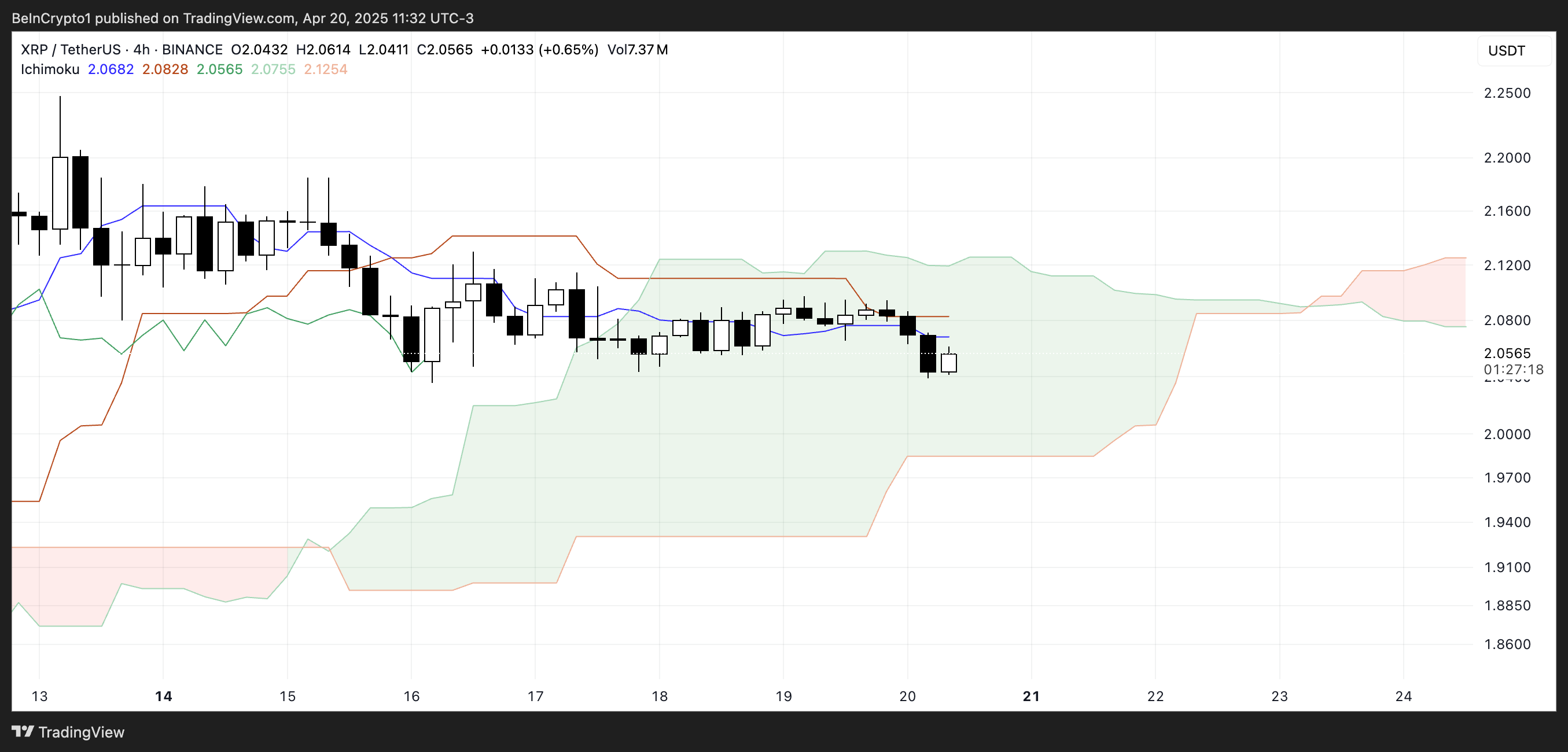
Looking ahead, the cloud has shifted from green to red—a sign that bearish momentum may be building. Even more concerning is that the red cloud is widening, which suggests increasing downward pressure in the near future.
A thickening red Kumo often signals stronger resistance overhead and a potential continuation of a bearish trend if the price breaks below the cloud.
Until XRP breaks out decisively in either direction, the market remains in a wait-and-see phase, but the growing red cloud tilts the bias toward caution.
XRP Compression Zone: A Breakout Could Send Price to $2.50 — Or Much Lower
XRP price is currently trading within a tight range, caught between a key support level at $2.05 and resistance at $2.09. This narrow channel reflects short-term uncertainty, but a decisive move in either direction could set the tone for what’s next.
If the $2.05 support fails, the next level to watch is $1.96. A break below that could trigger a steep drop toward $1.61, which would mark the first close below $1.70 since November 2024—a bearish signal that could accelerate selling pressure.
Recently, veteran analyst Peter Brandt warned that a major correction could hit XRP soon.

On the flip side, if bulls regain control and push XRP above the $2.09 resistance, the next target lies at $2.17. A breakout beyond that could open the door to a move toward $2.50, a price level not seen since March 19.
For that to happen, XRP would need a clear resurgence in momentum and buying volume.
Until then, the price remains trapped in a narrow zone, with both upside and downside potential on the table.
Disclaimer
In line with the Trust Project guidelines, this price analysis article is for informational purposes only and should not be considered financial or investment advice. BeInCrypto is committed to accurate, unbiased reporting, but market conditions are subject to change without notice. Always conduct your own research and consult with a professional before making any financial decisions. Please note that our Terms and Conditions, Privacy Policy, and Disclaimers have been updated.
-
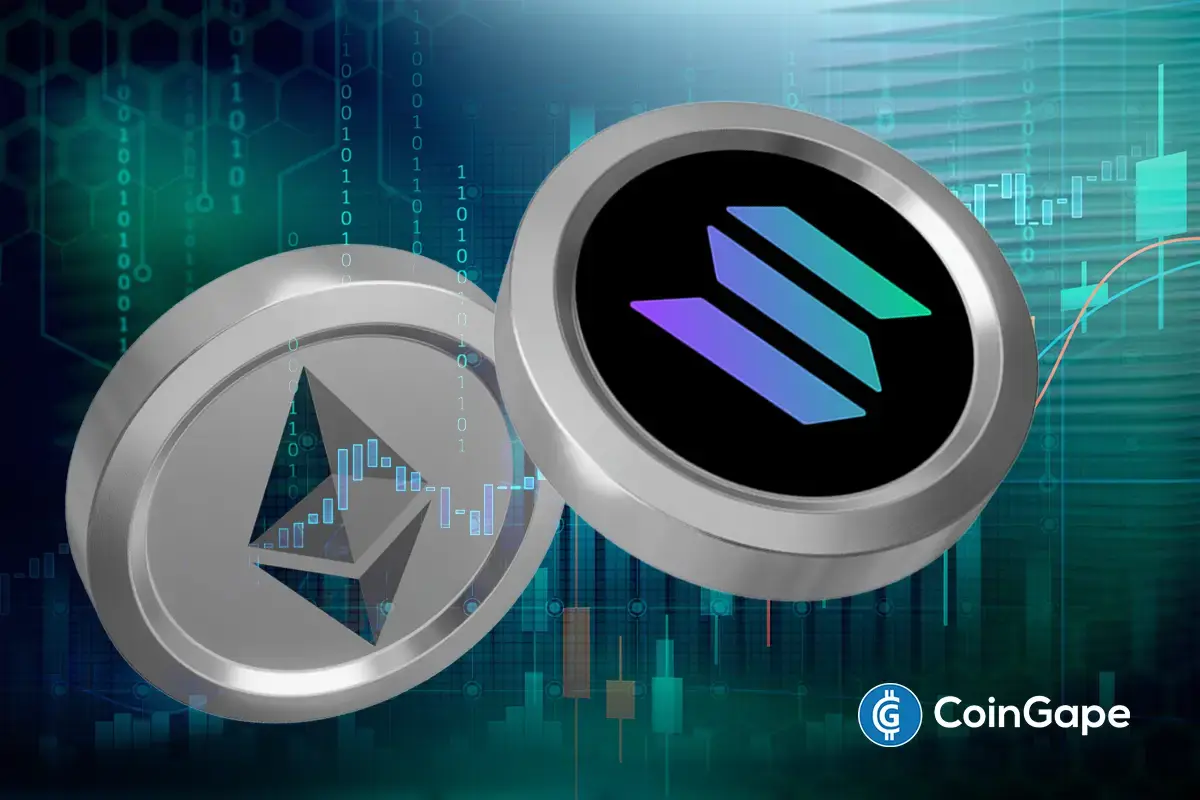
 Altcoin23 hours ago
Altcoin23 hours agoUniswap Founder Urges Ethereum To Pursue Layer 2 Scaling To Compete With Solana
-
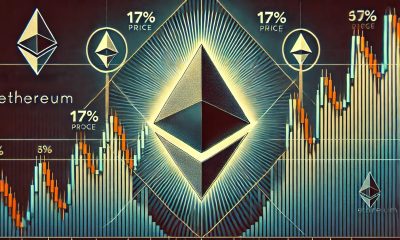
 Ethereum20 hours ago
Ethereum20 hours agoEthereum Consolidates In Symmetrical Triangle: Expert Predicts 17% Price Move
-

 Market19 hours ago
Market19 hours agoToday’s $1K XRP Bag May Become Tomorrow’s Jackpot, Crypto Founder Says
-

 Market13 hours ago
Market13 hours ago1 Year After Bitcoin Halving: What’s Different This Time?
-

 Market17 hours ago
Market17 hours agoMELANIA Crashes to All-Time Low Amid Insiders Continued Sales
-
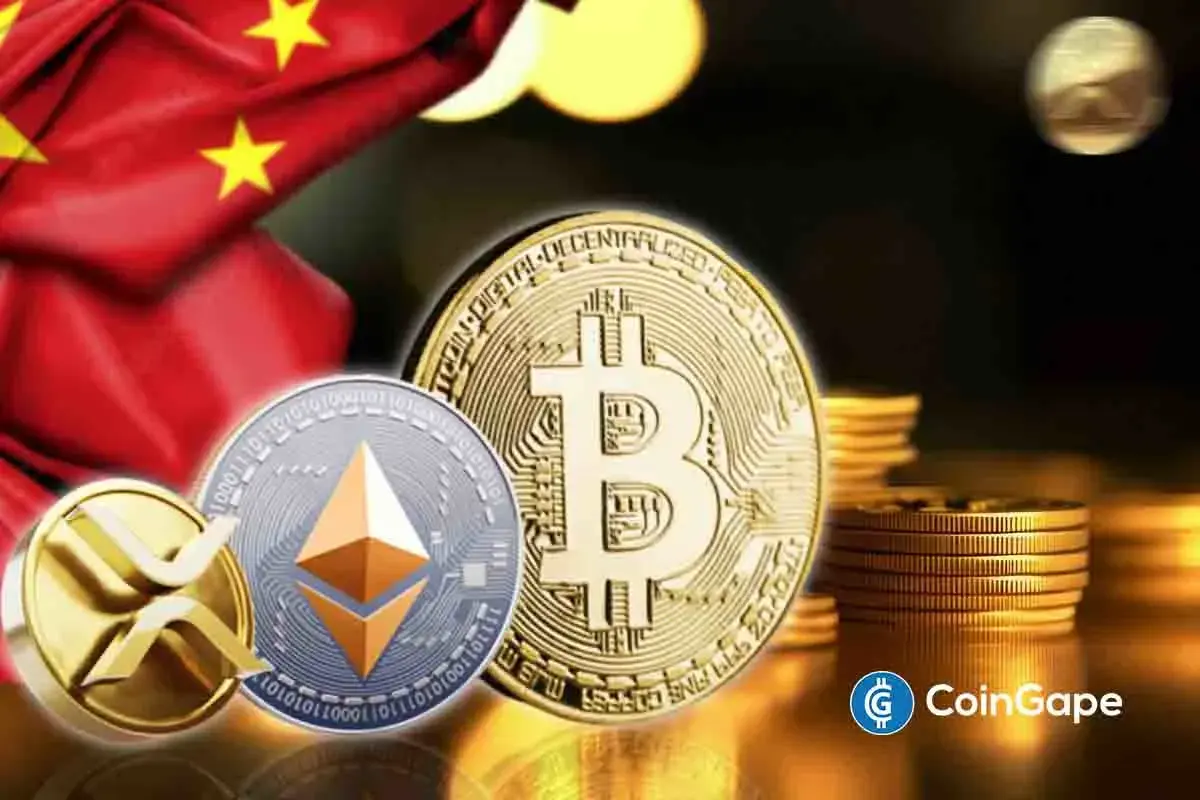
 Altcoin22 hours ago
Altcoin22 hours agoWhat’s Up With BTC, XRP, ETH?
-

 Ethereum22 hours ago
Ethereum22 hours agoEthereum Accumulators At A Crucial Moment: ETH Realized Price Tests Make-Or-Break Point
-

 Market18 hours ago
Market18 hours agoCharles Schwab Plans Spot Crypto Trading Rollout in 2026


